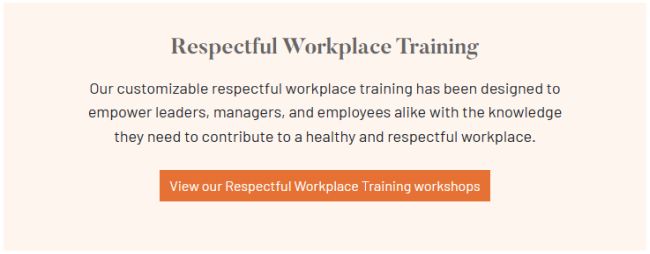I was waiting in a security line at the airport last week when someone brushed past the woman and child behind me to jump the line. I was struck by the rudeness (and boldness) of this act of disrespect and so I discretely pointed it out to the offender. They responded by raising their voice, denying the act, and telling me to mind my own business in a fit of profanity. Whew! That took the initial disrespect to a whole other level!
Anyone I ask lately agrees that they sense a decline in people's behaviour in society. From what we observe in interactions between our political leaders, to witnessing road rage, to social media vitriol, everyone seems to have a recent experience with disrespect. In fact, according to an annual survey conducted by the American Bar Association, a "massive 85% of U.S. residents believe civility is worse compared to 10 years ago."1 This may be disappointing, but what does this have to do with our workplaces?
It turns out that there is a direct link between what people experience outside of work and how they treat people at work. Disrespect is contagious. Left unaddressed, people who experience it outside of work are inclined to repeat this behaviour with their co-workers. And given how much we have all been dealing with outside of work (global pandemic, economic uncertainty, war, etc.), many victims of disrespect are inclined to just look the other way and not take action in response. This may be easier in the short term, but research demonstrates that this can have long-term negative consequences – both for our workplaces and the people who work in them.
As Christine Porath writes in her 2016 book, Mastering Civility: A Manifesto for the Workplace 2:
- The effects of your words and deeds ripple far beyond the people working directly with you. If you're uncivil to someone, expect that he or she will pass it on...
- When you're civil, you contribute to a cycle that fosters greater civility across all of your networks.
As she also explores at length in her book, "[t]he human and business costs of incivility are much greater than you think."3
So how can we address this in our workplaces? Many organizations that have delivered harassment training, sometimes even calling it "Respect in the Workplace" training, have assumed that their work is done. However, what is clear is that if we are trying to elevate employees' experience in the workplace and help them spend more time in what we call "The Zone," there is more work to be done. The Zone can be thought of as an employee's happy place at work: the specific environment which allows an employee to be their best, most productive, and professional self. Taking steps to create an environment where the majority of employees spend the most amount of time in The Zone is continuous work – it has really only just begun after the harassment training is delivered.
There are a number of relatively simple things that employers can do to continue cultivating their "Zone":
- Review policies
Most policies define inappropriate behaviour as anything that violates human rights or other legislative requirements. However, there is much disrespectful behaviour that occurs in the workplace which never meets those definitions. Increasingly, employers are updating their policies to make clear the expectation that the standard of behaviour in their workplace is one of respect and goes beyond just expecting employees not to harass and/or discriminate against each other.
- Conduct enhanced Respect in the Workplace training
Like the policies that only reference harassment and discrimination, much "respect at work" training only reviews these definitions, when in fact the vast majority of inappropriate behaviour that people encounter at work does not meet these definitions. Even though some might argue that less serious forms of disrespect need not be policy issues, these behaviours can nonetheless have a profound impact on employees' wellbeing and their ability to do their jobs. In addition, there are many behaviours which might only be considered disrespectful on a one-time occurrence, but which could rise to the level of harassment if left unaddressed. For all of these reasons, the most effective training discusses these types of behaviours and provides employees with mechanisms for addressing them.
- Monitor progress
Most research on harassment notes that only about 25% of people report this behaviour in their workplaces. It would seem likely that even fewer would report incidents of disrespect. Organizations often mistakenly assume that their workplaces must be respectful if no one has complained, when in fact they may just have never asked. If an organization really wants to find out if they have a culture of respect, they should check proactively. This can be done in a variety of ways, from employee engagement surveys asking targeted questions to more formal workplace assessments or reviews.
- "Rinse and repeat"
Maintaining a culture of respect takes work, and ongoing attention. One policy and training session might elevate things for a short period of time, but in order to truly communicate the organization's commitment to culture, ongoing work must be done. Policy reviews and training should take place on a regular basis – things will be identified over time that can help improve the "respect in the workplace system." More time spent on these initiatives also signals to staff how committed the organization is to creating and maintaining a respectful workplace culture.
- Address issues when they arise
Nothing sends a stronger message about how little value an organization places on its culture than when an employee complains or reports an incident of disrespect and nothing is done. It is critically important for organizations to address these issues when they become aware of them, and even more important to be sure that the employee who raised the issue knows that it has been addressed.
Taking steps now to increase respect in the workplace, and helping employees find The Zone, will enhance their ability to perform to their potential during these difficult times.
Footnotes
1ABA Survey of Civic Literacy 2023, online: American Bar Association (https://www.americanbar.org/content/dam/aba/administrative/news/2023/2023-civic-literacy-survey.pdf), p. 1.
2 (New York: Grand Central Publishing, Hachette Book Group, 2016).
3 I am intentionally choosing not to refer to the behaviour discussed in this blog as "incivility." This term has been weaponized by some in placing a negative connotation on behaviour engaged in by equity-seeking groups who advocate for social justice. Demands for "civility" in our workplaces should not be used as a means of stifling such work.
The content of this article is intended to provide a general guide to the subject matter. Specialist advice should be sought about your specific circumstances.


